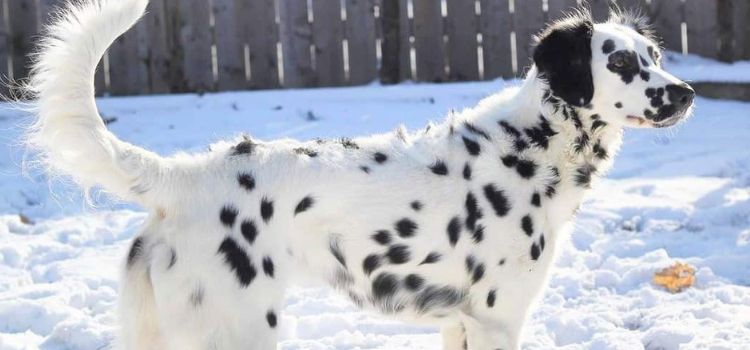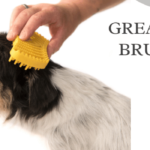The long haired Dalmatian is a rare variety of the popular Dalmatian breed. Although they share many similarities with their short-haired cousins, there are some important differences to be aware of if you’re considering adopting one of these beautiful pups. In this article, we’ll cover the history and origins of the long haired Dalmatian, their unique care needs, and some tips on training them
The history of the long haired Dalmatian
The long haired dalmatian is a relatively new breed of dog, having only been around since the early 1970s. However, despite their relatively short history, they have quickly become a popular breed thanks to their unique appearance and charming personalities.
Interestingly, the long haired dalmatian is actually a result of a genetic mutation, rather than being bred intentionally. The first long haired dalmatian was born in 1971, and subsequent litters began to produce more and more of these beautiful dogs.
While they may look quite different to their short haired cousins, long haired dalmatians are just as loving and friendly. They make great family pets and are known for being very intelligent and easy to train.
If you’re thinking of adding a long haired dalmatian to your family, be sure to do your research first. These dogs need plenty of exercise and grooming, so they’re not the best fit for everyone. But if you’re up for the challenge, a long haired dalmatian can make a wonderful companion.

Long Haired Dalmatian Appearance
The Long Haired Dalmatian is a variation of the popular Dalmatian breed. They are easily recognizable by their long, silky coats. While they may look different than their short-haired cousins, they are just as friendly and lovable. Long Haired Dalmatians make great family pets and are relatively easy to care for. With proper training, they can be well-behaved dogs that are a joy to have around.
Fur & Coat:
Long-haired Dalmatians are one of the most popular dog breeds in the world. They’re known for their striking appearance and friendly disposition. But what many people don’t know is that these dogs have a long and fascinating history.
Dalmatians were originally bred in Dalmatia, a region in Croatia. They were used as guard dogs and hunting dogs by the local nobility. The breed eventually spread to other parts of Europe, where they became popular pets among the upper class.
Dalmatians first came to America in the late 1800s. They quickly became popular carriage dogs, accompanying their owners on horse-drawn carriages. They also gained popularity as firehouse dogs, thanks to their bravery and loyalty.
Today, Dalmatians are still popular pets and working dogs. They make great family pets and are wonderful companions. They’re also still used as firehouse dogs in many parts of the country.
If you’re thinking about getting a Dalmatian, there are a few things you should know about their care and training. Long-haired Dalmatians need regular grooming to keep their fur from mats and tangles. And like all dogs, they need plenty of exercise and proper
Height & Weight
The Long Haired Dalmatian is a tall breed of dog, standing anywhere from 19 to 23 inches at the shoulder. They are a muscular breed with a long, sleek coat of hair. The hair on their back is shorter than the hair on their sides and legs, and their tail is long and tapering. They have a long head with a tapered muzzle, and their eyes are large and round. Their ears are floppy and hang down close to their head.
Long Haired Dalmatian Temperament
The long haired Dalmatian is a beautiful and unique breed of dog. They are loyal and loving companions, but they can also be strong-willed and stubborn. If you are thinking about getting a long haired Dalmatian, it is important to do your research and understand the temperament of this breed. With proper care and training, a long haired Dalmatian can be a wonderful addition to your family.
How to take care of a long haired Dalmatian?
Assuming you have a long haired dalmatian, there are special considerations to take into account for their care. This includes everything from grooming to nutrition. Read on for tips on how to take care of your long haired dalmatian.
The first thing to consider is grooming. A long haired dalmatian will require more brushing than a short haired one. It’s important to brush regularly to prevent mats and tangles from forming. You’ll also want to keep an eye out for any skin problems that can occur with a long coat.
Next, think about nutrition. A long haired dalmatian may require a different diet than a short haired one. This is because they tend to have higher caloric needs and may need more fat in their diet. Talk to your veterinarian about the best diet for your long haired dalmatian.
Finally, think about exercise. A long haired dalmatian will need plenty of exercise to stay healthy and happy. They’re a high energy breed and need an outlet for all that energy. Be sure to provide plenty of opportunities for your dog to run and play.
Training a long haired Dalmatian:
Assuming you would like tips on training a long-haired Dalmatian:
1. Start early and be consistent
It is important to start training your dalmatian as early as possible, around 8 weeks of age. This will help them to understand what is expected of them and will make the learning process easier for both you and your dog. Be consistent with your commands and rewards, so that your dog knows what they are being praised for.
2. Use positive reinforcement
Rewards are a great way to encourage good behavior in your dog. Try giving them treats or verbal praise when they follow a command correctly. Avoid using negative reinforcement such as scolding or punishment, as this can make your dog anxious and less likely to want to learn.
3. Be patient
Training takes time and patience, so don’t expect miracles overnight. Be prepared to devote some time each day to working with your dog on their obedience commands. If you get frustrated, take a break and come back later when you’re both feeling calmer.
4. Get help from a professional
If you’re struggling to train your long-haired dalmatian, it may be helpful to seek out the assistance of a professional trainer. They can offer guidance and support to help you get your dog on the right track.
Make Sure Your Dalmatian Gets A Lot of Exercise!
Dalmatians are high-energy dogs that need a lot of exercise. A daily walk or run is essential, and they also enjoy playing fetch and other active games. If you don’t have the time or energy to keep up with their exercise needs, a Dalmatian is not the right breed for you.
Potential Health Issues of Long Haired Dalmatians:
While long haired Dalmatians are a beautiful breed, they are unfortunately prone to certain health issues. Some of the potential health problems that your long haired Dalmatian could experience include:
Deafness
Dalmatians are a very special breed of dog. They are not only beautiful, but also have a very unique coat of fur. Unfortunately, this coat can also be a health hazard for Dalmatians. One major health concern for Dalmatians is deafness.
Deafness is a common problem in Dalmatians. In fact, it is estimated that around 10% of all Dalmatians are born deaf. Deafness can be caused by a number of factors, including genetics, infection, and trauma.
There are several ways to test for deafness in Dalmatians. The most common method is the BAER test, which stands for Brainstem Auditory Evoked Response. This test uses electrodes to measure the electrical activity in the brain in response to sound stimuli.
Deafness is a serious condition that can make it difficult for Dalmatians to interact with their surroundings. However, with proper care and training, deaf Dalmatians can lead happy and healthy lives.
Potential Obesity
One of the potential health problems that can affect long haired Dalmatians is obesity. This is especially true if the dog is not given enough exercise. Obesity can lead to a number of other health problems, including joint problems, respiratory difficulties and diabetes. If you are concerned that your long haired Dalmatian may be overweight, talk to your vet about an appropriate weight loss and exercise plan.
Hip dysplasia:
This is a condition where the hip joint does not form properly, leading to pain and lameness.
Ear infections:
Because of their long floppy ears, Dalmatians are more prone to ear infections than other breeds. Regular cleaning and checking of their ears is essential to preventing these infections.
Bladder stones:
Dalmatians are also prone to developing bladder stones, which can cause urinary problems and be very painful. If your Dalmatian starts urinating more frequently or seems to be in pain when urinating, take them to the vet to have their bladder checked for stones.
Elbow dysplasia:
This is a similar condition to hip dysplasia, but affecting the elbow joint instead. It can also cause pain and lameness.
Progressive retinal atrophy:
This is a degenerative disease of the retina that can eventually lead to blindness.
Allergies:
Long haired Dalmatians are especially prone to allergies, which can cause itching, irritation and respiratory problems.
If you’re considering getting a long haired Dalmatian, make sure you’re aware of these potential health issues. And be sure to visit your veterinarian regularly to help keep your dog healthy and happy!
Pros and cons of owning a long haired Dalmatian
Owning a long haired dalmatian comes with its pros and cons. On one hand, you have a beautiful, unique dog that is sure to turn heads when out and about. On the other hand, you have a dog that requires more grooming than the average short haired dalmatian. If you are considering adding a long haired dalmatian to your family, be sure to do your research to see if this is the right breed for you.
Some of the pros of owning a long haired dalmatian include:
-They are absolutely gorgeous dogs!
-Their long coats make them stand out in a crowd and they are sure to turn heads when out on walks.
-Their coats require more grooming than the average dog, but this can be seen as an opportunity to bond with your pet.
Some of the cons of owning a long haired Dalmatian include:
-Their long coats require daily brushing to prevent matting and tangles.
-They are more prone to hot spots and other skin problems due to their long coats.
-They shed A LOT. Be prepared to find hair everywhere in your home!
Conclusion:
The long haired Dalmatian is a beautiful and unique breed of dog that has a lot to offer. They are loyal, loving and make great family pets. If you are thinking of getting a long haired Dalmatian, then be sure to do your research first so that you know what to expect in terms of care and training.









